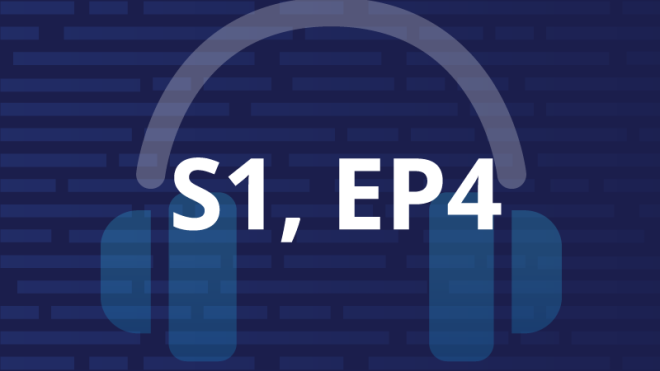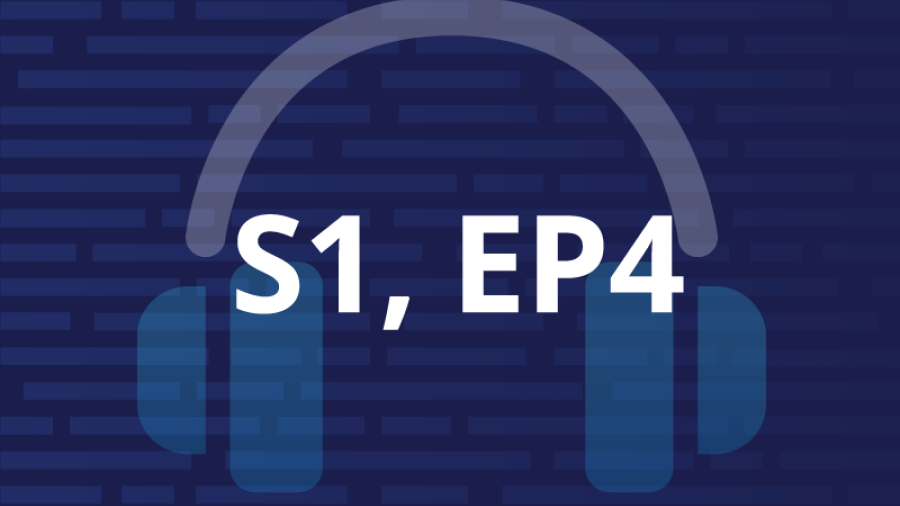The New Ideas from Kaufman Hall podcast series investigates emerging and unexpected trends in healthcare and beyond, featuring Kaufman Hall experts and guests from health systems, academia and related disciplines.
Season 1, Episode 6 - Making “Everyday Health” A Reality
All providers want to help their patients receive the care they need when and where they need it, but a fragmented, reactive healthcare delivery system often gets in the way.
A new initiative at Sutter Health hopes to redesign primary care—the traditional gateway to the healthcare system—to meet their patients where they are in their lives, instead of waiting for their next visit to the physician’s office.
On the latest episode of New Ideas from Kaufman Hall, Chris Waugh, Chief Design and Innovation Officer at Sutter Health, discusses the system’s vision for “everyday health,” a proactive, continuous, and personalized approach to healthcare.
The episode also explores:
- How healthcare can adapt techniques from other industries to help patients reach their goals
- The role of health coaches and regular patient check-ins in the primary care system of the future
- Strategies for reducing the time between a health system’s first interaction with a patient, a diagnosis, and the development of a care plan
HOST

Haydn Bush
Haydn Bush has two decades of experience as a journalist and communications professional in healthcare and related fields. He currently serves as vice president in Kaufman Hall’s thought leadership department.
Prior to Kaufman Hall, Haydn worked in various communications roles at the American Hospital Association and McCabe Message Partners, an award-winning public relations firm focused exclusively on health and healthcare.
During his tenure as a writer and editor for Hospitals & Health Networks magazine, Haydn’s reporting on improving care and reducing costs for the patients with the highest healthcare costs received honors from the National Institute for Health Care Management Foundation and American Business Media.
GUEST

Chris Waugh
Chris Waugh is Chief Design & Innovation Officer at Sutter Health.
Waugh applies his extensive experience in human-centered design to guide the integrated network’s innovation strategy. Human-centered design is a creative approach that seeks personalized solutions to meet individual needs—understanding people and their behaviors, identifying trends and exploring solutions that improve a person’s healthcare experience—in order to make healthcare more usable and accessible for patients, doctors and nurses.
Before joining Sutter Health, Waugh held entrepreneurial leadership roles at IDEO, a globally regarded Bay Area design and innovation firm, and was vice president of design at One Medical Group in San Francisco where he helped create a culture of innovation.
Transcription
Haydn Bush: Welcome to New Ideas from Kaufman Hall. I'm Haydn Bush. When prognosticators look into healthcare's crystal ball, they often describe a future where patients receive the care they need when and where they need it. In order to realize this utopia and leave behind today’s largely fragmented, reactive care delivery system, health systems and other providers will have to relentlessly test and refine new approaches to care in the years to come. I recently spoke with Chris Waugh, Chief Design and Innovation Officer at Sutter Health, to discuss the system's move to what it calls “everyday health,” with a focus on proactive, continuous, personalized healthcare. “Everyday health” is intended to reshape how patients experience primary care, with a shift away from traditional office visits to more frequent technology-enabled check-ins.
Chris Waugh: We think about, “How do we shift the context from folks that are coming to us where we are to definitely going where they are?” But…it's bigger than just moving the medical appointment where they are. What's the role of a health coach in this scenario? How do we create more continuous dialogue with people in their lives? It's more about more frequent check-ins, and understanding the context of our users' lives, and what they need at any given time. That’s how we start to think about what we call “everyday health.”
Bush: While the initiative parallels consumers and trends in other industries, Waugh believes the model can produce particularly outsized results in healthcare. Those regular touchpoints? They might be just the thing to help patients reach their personal health goals.
Waugh: If you think of their car, it's not just a car service. It's a proactive reach-out in the fall that says, "It's going to start raining. You might want to think about some wiper blades." I think there are examples of that [outside of] healthcare. [We’re trying to] team up to make some pretty serious life adjustments and life changes, [or to adapt to] a diagnosis. That needs to be happening on a more continuous basis, as people are trying different things and learning different things about what's working and what's not. Simple things like engaging that person in that process are really, really important. So there's a consumerism expectation. But most importantly, that's how we're going to get a better effect on what we're ultimately trying to do together, which is to create a better outcome for their lives. And for us, that's clinical. For us, that's outcomes-based. For us, that's trying to do that in a more cost-effective way. For them, that's about maintaining something that they were trying to achieve.
Bush: Waugh described how a patient who showed up with stomach pain was cared for in the “everyday health” model.
Waugh: Normally, that would have prompted a reach-out to the healthcare system and trying to make an appointment, and getting into that appointment. In this case, we could see her virtually that morning, do a quick check-in, [and ask her] what's going on. In this case, we knew we needed a lab. So, we got her to a lab [close to her] at her convenience. We could read the lab on our side and then diagnose, if possible. And in that case, we were able to diagnose and then deliver medication that afternoon. What we see there is a full loop closure in the same day, from the lab draw to the medication to the diagnosis and the assessment of what's going on. That cycle time is exponentially faster that way. It's convenient for her, it's doable for us, and there's a very happy outcome.
Bush: The system is monitoring and measuring the program's impact on patients and their families, clinicians, and the total cost of care.
Waugh: We know that healthcare costs every American about $10,000 a year. That is not right. We need to look at ways where we can reduce total cost of care by creating a more engaging experience. The meta-measure is total cost of care reduction. Burnout is a big problem in healthcare, so [we’re] keeping a very close eye on what's it like to deliver care in this way, and we're very encouraged by what we're seeing there. Last but certainly not least—I’d put this right up front—[is asking] what the experience is like from the patient and family side. And watching things like [Net Promoter Scores] and engagement scores. Are they happy? And we're really happy with what's going right there.
Bush: Waugh also offered a few words of advice for health systems hoping to test their own vision of everyday health.
Waugh: I think it's about looking [at] the various stakeholders that need to adopt the thing that you're trying to do, and [making] sure that it works for all of them. We may have a great concept that's really great for patients but might create more short-term burden on our care teams, for example. In the end, that's not going to end up catching on. You have to look at things like, what's good for the person and their family? How does that concept intersect with the care team? How does that work? Is it economically viable? Because ultimately, we want these things to survive. And so [we are] checking the various stakeholder boxes [to] see if [we have] successful adoption wins across all of them. And if any one of them are flawed, they need to be addressed. We might have something that would be great for patients and physicians but isn't economically viable. We might have something that's economically viable, but it's just not very usable from a patient perspective. [It’s important to be] making sure you're looking through that and not just through the user's lens, but looking through users in the broadest sense and how [they would] all benefit from it.
Bush: Thanks for listening to this edition of New Ideas from Kaufman Hall.
Please take 5 minutes to share your thoughts on the future of America's healthcare business






